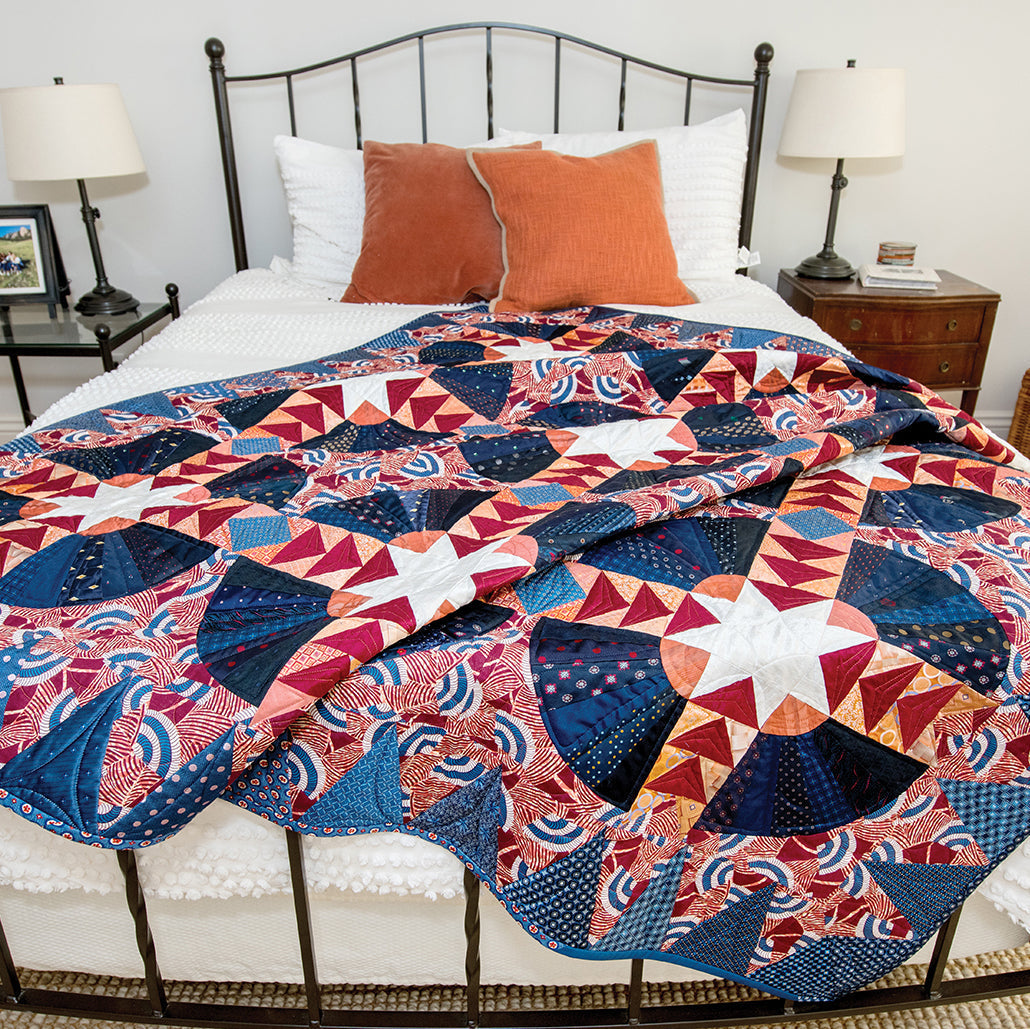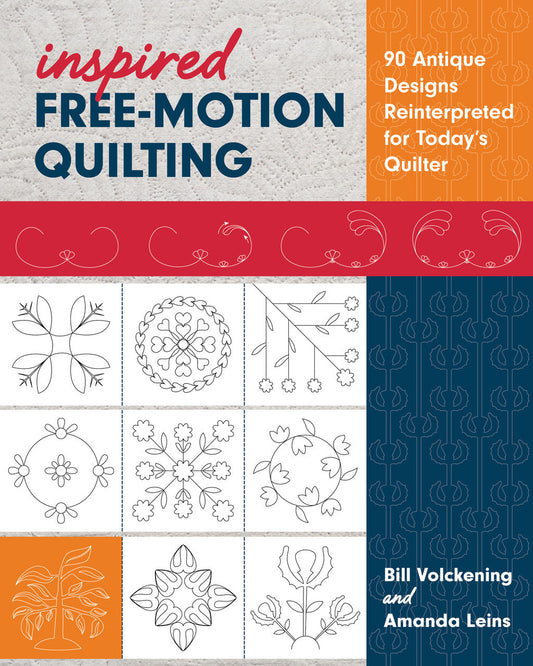
Celebrate National Silk Day: The Beauty and History of Silk in Quilting
Share
Happy National Silk Day! Few fabrics carry the same sense of luxury, shine, and history as silk. Though it can be a little tricky to sew with, quilters have long turned to this remarkable fiber for the elegance and dimension it brings to their projects.
Julia McLeod, author and instructor, shares her enthusiasm:
"Happy National Silk Day, Everyone! Celebrate by diving into my book, Patchwork Luxe, or my Creative Spark course, 'How to Use Silks in Your Quilt Making.' Silk fabrics add a unique shine and intensity of color to your quilts. With my techniques and tips, you'll get beautiful results. Happy sewing!"
This excerpt from Patchwork Luxe offers a glimpse into silk’s rich story in quilting and fabric arts—along with practical guidance for incorporating this timeless material into your own creative work.

What to Know About Silk
Silk is an animal protein fiber secreted by moth larvae. This natural fiber is prized for its luster, strength, and absorbent qualities that make it easy to dye and print, and for the ease with which it can be blended with other fibers.
Most commercially produced silk comes from the domesticated Bombyx mori moth that feeds on mulberry leaves. The cocoons created by these silkworms produce 109–328 yards (100–300m) of white silk filament, which is then processed and spun into silk thread.
Other species of silk worms, feeding on a variety of different plants, are the source of silk in smaller quantities around the world. Tussah, the best-known wild silk, is grown in China, Japan, North Korea, and South Korea. In Africa, you’ll find Kalahari and sanyan silks; unique to Madagascar is landibé silk in shades of tan. Specific regions of India produce brown tussar silk, golden muga silk, and the heavier eri silk. The greenish Tensan silk is prized in Japan, while fagara silk grows in regions as far apart as China and Sudan.
Silk production, or sericulture, is an industry with high labor and production costs. China and India are currently the dominant producers, but countries such as Uzbekistan, Brazil, Japan, the Republic of Korea, Thailand, Vietnam, and Iran also grow silk.
 The History of Silk Fiber and Fabric
The History of Silk Fiber and Fabric
The earliest use of silk filament in textiles dates back to China’s Neolithic period, around 3000 BCE. One legend has it that a Chinese princess accidentally dropped a silk cocoon into her hot tea and observed its unraveling, revealing the finest, longest filament she had ever seen.
Chinese silk production was fiercely protected for centuries before the secrets of sericulture were acquired by Japan, Korea, and India around 200 BCE.
Travelers on the Silk Road—trading routes that ran from China west through Persia and Eastern Europe to Italy—finally smuggled silkworm eggs and mulberry seeds to Turkey and Greece in the sixth century.
Sericulture was established in Spain by the tenth century and within 200 years had spread to northern Italy.
In the densely populated cities of Europe, by using imported raw materials from China and Persia, the silk spinning and weaving industry grew throughout the seventeenth and eighteenth centuries.
Meanwhile, in the Americas, Spain attempted to bring sericulture to Mexico and California in the early sixteenth century, and the 1700s saw attempts by England’s King James I to establish silk production in the American colonies. From Connecticut to Georgia, mulberry trees were planted. Successful for a while, silk production ultimately gave way to a more profitable crop: tobacco.
Although American sericulture faltered, the 1800s saw a strong U.S. textile industry employing imported silk to manufacture thread, ribbons, and textiles. Quilters incorporated silk scraps and ribbons into their crazy quilts, a style trend that remained popular for the last quarter of the nineteenth century.
In the early twentieth century, Japan took the lead in using scientific methods to cultivate silk on farms and in factories. Those techniques are now used worldwide. Two world wars and the invention of rayon, or artificial silk, affected the production and sales of silk worldwide. Throughout history, many and various factors have influenced the spread of sericulture and silk textile manufacture. Drought, flood, plague, war, trade embargoes, labor costs, and competing crops have all contributed to the success or failure of silk production.
...
Excerpted from PATCHWORK LUXE by JULIA MCLEOD. Copyright © 2024 by C&T Publishing. All rights reserved. No part of this excerpt may be reproduced or reprinted without permission in writing from the publisher.
...
Born and raised in England, Julia McLeod earned a BA in Fashion and Textile Design. She trained as a textile designer and worked in the British textile industry in Yorkshire and Scotland. Quilting intensively since 2015, she specializes in using silks and upcycled fabrics. Julia lives in the San Francisco Bay Area of California. juliamcleodquilts.com












